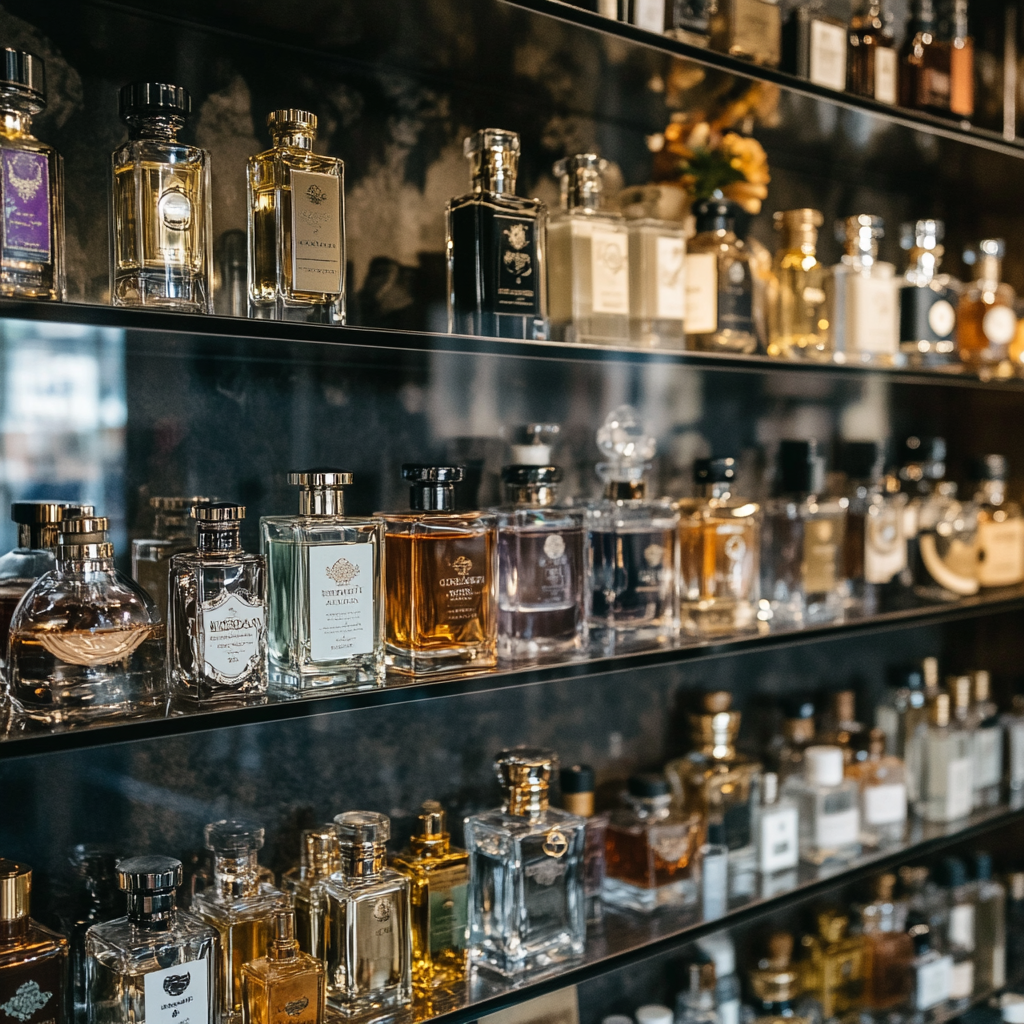Choosing the perfect fragrance can be a transformative experience, as it helps define your personal style and leaves a lasting impression on those around you. However, for beginners, the vast array of scents, notes, and brands can make this process seem overwhelming. Selecting the right fragrance isn’t just about finding something that smells good—it’s about finding a scent that complements your personality, lifestyle, and preferences. In this article, we will provide essential tips for beginners, helping you navigate the world of perfumes and make informed decisions when choosing your signature scent.
Understanding Fragrance Families
The first step in selecting the right fragrance is to understand the different fragrance families, which categorize perfumes based on their primary scent characteristics. Each family offers a unique olfactory experience, catering to different moods and occasions. One of the most common families is the floral family, which includes scents that evoke the smell of fresh flowers like roses, jasmine, and lilies. Floral fragrances are often soft, romantic, and ideal for those who enjoy delicate, feminine scents.
Another popular fragrance family is the woody family, known for its earthy, warm notes such as sandalwood, cedar, and vetiver. Woody scents tend to be rich and grounding, making them perfect for someone seeking a more sophisticated or masculine profile. If you enjoy the outdoors or have a strong, confident personality, you might gravitate toward this family.
The citrus family is characterized by bright, fresh, and zesty scents derived from fruits like lemon, bergamot, and orange. These fragrances are energizing and perfect for daytime wear, particularly in warm weather. If you prefer light, clean scents that evoke freshness and vitality, the citrus family might be your best bet.
Lastly, the oriental family includes rich, spicy, and exotic notes such as amber, vanilla, and cinnamon. Oriental fragrances are often associated with sensuality and mystery, making them ideal for evening wear or formal events. If you’re drawn to deeper, more intense fragrances, this family may be your preferred choice.
Identifying which fragrance family resonates with you is a crucial first step. Exploring perfumes within that family will help narrow down your options and make the selection process much easier.
Identifying Personal Preferences
Understanding your personal scent preferences is key to finding the perfect fragrance. Everyone’s sense of smell is unique, and what appeals to one person may not necessarily appeal to another. Start by considering the notes you tend to enjoy in other areas of your life. Do you love the smell of fresh flowers, warm spices, or the ocean breeze? These preferences can provide clues about the types of fragrances you’ll enjoy.
Another way to discover your preferences is by paying attention to the perfumes you already own or the scents you’re naturally drawn to when shopping. For example, if you find yourself consistently reaching for floral body sprays or citrus-scented candles, you might prefer perfumes with similar notes. Conversely, think about scents you don’t enjoy. If you dislike heavy, sweet smells, you may want to avoid gourmand fragrances, which often include notes of vanilla, caramel, or chocolate.
Your lifestyle and personality also play a significant role in fragrance selection. If you have an active, on-the-go lifestyle, you might prefer fresh, clean scents that feel light and energizing. On the other hand, if you enjoy elegance and sophistication, you might lean toward more complex, rich fragrances that leave a lasting impression. Additionally, think about the occasions for which you’ll wear the fragrance—casual daily wear may call for a different scent than special events or evenings out.
By considering both your personal preferences and lifestyle, you can begin to identify the types of fragrances that best suit you, ensuring that your chosen scent feels authentic and comfortable.
Testing and Sampling Fragrances
One of the most important steps in choosing a fragrance is testing and sampling it properly. Fragrances can change significantly once applied to the skin, as your body chemistry interacts with the perfume’s ingredients. When testing a fragrance in-store, begin by using a blotter (a small piece of paper designed to hold a sample of the scent). This allows you to get a general sense of the fragrance without applying it directly to your skin. However, it’s important to remember that the scent on a blotter may not smell exactly the same as it will on your skin.
- Once you’ve narrowed down your options, apply the fragrance to your pulse points—areas where your skin is naturally warmer, such as your wrists, neck, or inner elbows. This warmth helps the fragrance develop fully, allowing you to experience the top, heart, and base notes as they evolve over time. Top notes are what you smell immediately after applying the perfume, but they tend to fade quickly. Heart notes emerge after a few minutes and represent the core of the fragrance. Finally, base notes are the longest-lasting and provide depth and longevity to the scent.
- It’s essential to give the fragrance enough time to fully develop before deciding if it’s the right one for you. Ideally, wear the fragrance for several hours to see how it changes on your skin and to assess whether you still enjoy it after the initial top notes have faded.
- In conclusion, taking the time to properly sample fragrances ensures that you choose a perfume that works with your body chemistry and feels right for your personal style.
Choosing the Right Concentration
Another important factor when choosing a fragrance is understanding the different concentrations available and how they affect the perfume’s strength and longevity. Fragrances come in several concentrations, with the most common being eau de toilette (EDT), eau de parfum (EDP), and parfum. The concentration refers to the amount of fragrance oils used in the perfume, which directly influences how strong the scent is and how long it lasts.
Eau de toilette (EDT) typically has a concentration of 5% to 15% fragrance oils, making it lighter and more suitable for everyday wear. EDTs generally last around 4 to 6 hours on the skin, making them ideal for those who prefer a subtle scent that doesn’t linger all day. Eau de parfum (EDP), on the other hand, contains 15% to 20% fragrance oils, resulting in a richer and longer-lasting scent. EDPs usually last for 6 to 8 hours, making them perfect for evening wear or special occasions.
For those seeking a more intense and long-lasting fragrance, parfum (also known as perfume extract) has the highest concentration of fragrance oils, ranging from 20% to 30%. Parfum can last up to 12 hours or more, making it a great choice for those who want their scent to make a statement and last throughout the day or night.
Understanding the difference between these concentrations will help you choose the right fragrance based on how long you want it to last and how prominent you want the scent to be. If you prefer a more subtle, everyday fragrance, an EDT might be the best choice. However, if you’re looking for something more intense and long-lasting, an EDP or parfum would be ideal.
Finally, we recommend reading our article, where we talked about what are niche fragrances.
FAQ
Floral fragrances are soft, romantic, and evoke the scent of fresh flowers like roses, jasmine, and lilies. They are ideal for those who enjoy delicate, feminine scents and are perfect for creating a light, graceful impression.
Woody fragrances, featuring earthy notes like sandalwood, cedar, and vetiver, are rich and grounding. They are suitable for individuals who appreciate sophisticated, masculine scents or have a strong, confident personality.
Citrus fragrances, known for their bright, fresh, and zesty notes like lemon and bergamot, are energizing and perfect for daytime wear, especially in warm weather. They offer a clean, vibrant scent that is ideal for casual or active settings.

